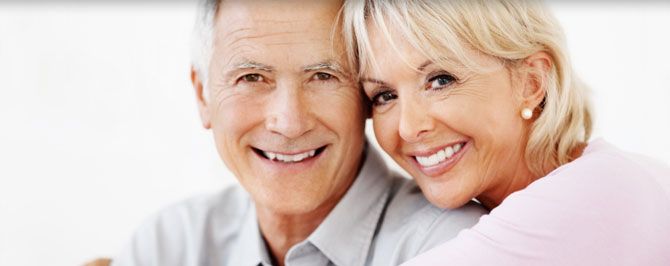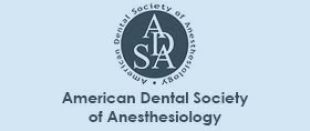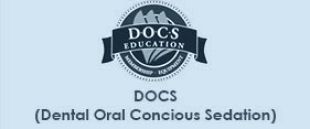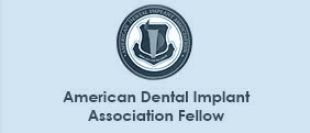






Achieving quality dentistry for life
Reopening Protocol May 2020
Preface:
Prior to dental school Dr. Lyford was in viral oncology working with both RNA and DNA viruses. After acquiring a biology degree, he spent the first five years in front of laminar flow hoods growing tissue culture with animal viruses and extracting DNA, RNA, and enzymes from these cultures. Since then he has maintained an interest in virology and maintained relationships with several colleagues now in private industry and the CDC.
Dr. Lyford has spent his dental career killing microbes, including bacteria, viruses, and phages. When he opened his dental practice in 1987 it was amid the HIV epidemic at which time the profession responded with “Universal Precautions”, resulting in profound changes in how we sterilized instruments, disinfected operatories, used gloves, and treated patients. AIDS was blood borne and we, as a profession, have become extremely good at protecting our patients, our staff, and ourselves from infection.
The COVID-19 pandemic is caused by a virus called SARS-Cov-2. It is one of seven strains of human coronaviruses. Four of them cause about 15% of what we know as the common cold, with mild symptoms (another virus family, Rhinoviruses, cause most of the common cold). Three coronavirus strains can cause far more serious symptoms and SARS-Cov-2 is the latest strain identified and the one in the headlines currently.
The challenge with this type of virus is its transmissibility (spread ability) by aerosol droplets. Controlling air quality and providing extremely good infection control of all surfaces is key to keeping our practice safe for patients, staff, and our families. 1:30
Pandemic Infection Control and Contamination Mitigation Protocol
Dentistry has been extremely meticulous in preventing disease transmission through tools and procedures, such as, personal protective equipment (PPE), disinfecting all work surfaces between patients, treating water lines, sterilizing all dental instruments, proper use of disposable items, and utilization of protective barriers for contact surfaces of stationary equipment. During the “Stop the Spread” measures and mitigation procedures of the coronavirus pandemic we have developed new processes and procedures to minimize the spread of the disease, ensure safe work environment, and a safe place for our patients.
Dr. Lyford feels good about having used “Universal Precautions” since the mid 1980’s when HIV first became a concern. It was a truly solid foundation on which to build and is second nature to us in the practice. Our current protocol was established and started on 3/17/2020 and has been revised and implemented on 4/27/2020.
Table of Contents
Checkpoint I – Prevent the Virus from Entering the Practice …………3
Checkpoint II – Virus Prevention at Patient’s Arrival …………4
Checkpoint III – Disinfection for the Patient …………4
-
-
Oral rinse …………4
-
Water Purification …………4
-
Checkpoint IV – Air Purification …………4
Checkpoint V – Aerosol Mitigation …………5
Checkpoint VI – Staff/ Provider Personal Protection Equipment (PPE) ……….6
-
-
Masks ………7
-
Gloves ………7
-
Eye protection ………7
-
Face Shield ………7
-
Hair nets ………7
-
Gowns ………7
-
Clinical Garb ………7
-
Early Reporting ………8
-
Checkpoint VII – Patient Departure ………8
Checkpoint VIII – Decontamination of the Operatory ………8
-
-
Disinfection Agents ………8
-
Air Filtration ………8
-
Checkpoint IX – Decontamination of the Non-Clinical Areas ………8
Checkpoint I – Prevent the Virus from Entering the Practice
The most simple, affordable, and effective tool available in the quest for preventing exposure to infectious disease is to prevent the contagion from ever entering the office as follows.
-
-
Patient Phone Screening: During the pre-appointment reminder phone call staff will assess you, the patient, to determine if you are at higher risk for being a carrier of the virus. We will ask you a series of questions regarding your current health.
-
Patient Attire Guidelines: We are asking patients to wear mask and gloves and bring a jacket as the air conditioning will be set quite low due to added layers of PPE staff will be wearing, so dress with that in mind
-
Appointment Companion Patient Guidelines: It is imperative to minimize human interactions until we resolve this pandemic; therefore, it is critical for patients to arrive to the appointment alone. In the event someone must accompany the patient, this person is to follow the same guidelines. All companions, however, will wait in their car once treatment is underway. If it is a parent/guardian of a that need to stay, they will have to wear PPE provided.
-
Minimizing Cross-contamination between Patients: Patients will wait in their car until the practice is ready to receive them. The patient will call us when they arrive; whereupon we will call the patient to come in when the team is ready. We will minimize the time exposure a patient spends in the practice and reduce the chance the virus can contaminate the air and surfaces of the dental facility.
-
Patient PPE: All patients are requested to come in with a mask and not remove it at any time (until directed by clinical staff) and disposable gloves. If you do not have mask and gloves, they will be provided upon entry.
-
Shift in Administrative Interactions with Patients: With today’s technology all attempts will be made to deal with administrative services over the phone, email, text while ensuring continued HIPAA compliance and electronic security.
-
-
For situations requiring communication between patient and administrative staff, staff will wear face shields to lower risk of transfer between the two individuals.
-
Business office will remind all patients in reception area of social distancing of 6 feet.
-
Business office and other team members will wipe all door handles after each patient enters, leaves, and uses the bathroom.
-
Efforts will be made to stagger patients’ appointments to allow for minimal communication between individuals in the facility.
-
-
-
Checkpoint II – Virus Prevention at Patient’s Arrival
Once screened and before being led to an operatory, the following measures will be performed to provide the safest experience for the patient and staff.
-
-
All patients will apply anti-microbial hand cleaner with >70% alcohol
-
All patients will be required to wear a mask to prevent potential airborne exhalation contaminating the practice and passers-by.
-
All patients will be required to wear medical gloves to prevent contact with surfaces and contaminating surfaces or potentially acquiring any contaminants.
-
Temperature will be taken on all patients with scanning forehead thermometer. A patient with a temperature higher than 100.4 degrees Fahrenheit will be asked to reappoint.
-
Checkpoint III – Disinfection for the Patient
Upon entering the operatory, the goal will be to reduce the potential viral load in your oral cavity and surrounding area by the following measures:
-
-
Oral rinse: An effective method of lowering risk exposure to infectious disease found in saliva would be the pre-rinse. You will be asked to rinse twice with either hydrogen peroxide and/or Chlorhexidine.
-
Extra-oral Skin Disinfection: The highest risk area for external viral aggregation, other than the hands is the face. Dental treatment is focused in this area, we will disinfect the extra-oral area to prevent inadvertent cross-contamination between you the dental providers and environment. Agents used for this purpose are povidone-iodine, alcohol, or chlorhexidine.
-
Water Purification: We use a self-contained central dental water system that generates pure water with both sediment filtration, softening, reverse osmosis, UV sterilization, and carbon filter technology to assure the water used for rinsing and cooling is free of microbes. We use agents to disinfect the water in the lines which might have an effect intra-orally in lowering microbial load. These water lines are checked regularly and have always checked out immaculately.
-
Checkpoint IV – Air Purification
We have installed state of the art Medical Grade Air Purifiers manufactured by Medify in every operatory as well as the reception area. These are commonly used in hospital clinical environments. The air in the operatories will be turned over every five minutes by these filtration units. Most filtration units are effective at eliminating particles as small as 0.3 microns, these units are effective at eliminating particles as small as 0.1 microns (the virus has a diameter of 0.125-0.150 microns).
The high-efficiency H13 TRUE HEPA filter is tested to remove 99.97% of particles down to 0.1 microns. This medical-grade filter easily catches bacteria, virus aerosols, pollen, and other tiny airborne particles you cannot see.
-
-
Substantial carbon filter with carbon pellets remove toxic odors
-
An anion generator produces negative ions to charge particles and trap them inside the unit
-
We have a larger Medify unit in the reception area that can filter the entire air volume of this space every 5 minutes as well.
Checkpoint V – Aerosol Mitigation
In addition to Air Filtration described above, as aerosols are being created in the oral cavity, we can divert the aerosols away from exposure to the providers, patient, and the operatory environment. The primary challenge that faces dentistry with respect to infection control is the presence of a high degree of aerosolization with many routine procedures. During this critical transition back into the post-coronavirus dental operatory, we will dramatically reduce aerosols from procedures so that patients and staff feel assured all measures are taken to minimize the risk of transmission of the virus.
Aerosols can be created by many dental procedures. In the hygiene department they are created using ultrasonic, rotary prophy cups, and simple air/water spray. In the clinical area the dentist produces aerosols with the high-speed handpieces.
-
-
In clinical trials by TRAC research (Dr. Rella Christensen) it has been demonstrated that the most effective means to reduce aerosols in dental procedures is the use of high-volume evacuation (HVE). To remove the potentially infected bioburden from the mouth high volume evacuation suction has been utilized. When this practice was built, we installed a central suction unit which is the most powerful on the market. As more demand is placed on the system suction is not decreased thanks to a sensor rheostat system that keeps the evacuation rate constant and extremely powerful.
-
The use of a rubber dam isolates the working environment of the mouth and separates it from the host and the host’s microbial contents. The rubber dam also allows the utilization of disinfecting agents on teeth that may be unsuitable on the oral soft tissues. This provides the best degree of lowering risk exposure.
-
The use of a novel HVE attachment called “Xuction” will be used. This is probably the most effective and ingenious device developed for aerosol control and is used right at the patient’s oral cavity.
-
https://www.youtube.com/watch?v=qa80nkLG0DE
-
Hygiene Department: In the hygiene department there are several measures that can be taken to achieve the goal of mitigating aerosols. It should be noted that these recommendations are provisional while the health officials quell the risk of Coronavirus transmission.
-
Hygiene will be minimizing the use of the ultrasonic. During this provisional period hygienists would utilize hand scalers as the primary tool for calculus and plaque removal.
-
The use of “Xuction” and high-volume evacuation have been shown to be the most effective way of eliminating bio aerosols. Use of both in conjunction with the Medify Air Purifiers described above within each operatory will ensure minimizing the aerosol production.
-
-
Restorative and Surgical Care: While a dentist is performing dental procedures aerosol creation comes with the territory. We have used the rubber dam since 1985 whenever feasible this is not new for us. In conjunction with the use of high-volume evacuation and the Medify Air Purifiers, described above, in each operatory will ensure minimizing the aerosol production.
Checkpoint VI – Staff/ Provider Personal Protection Equipment (PPE)
Ensuring the safety and health of our staff is another way to ensure the safety and health of our patients. It is truly a win-win relationship.
Staff will be screened with several specific questions each morning upon entering the practice to verify they have no symptoms of infection. Body temperatures will be taken prior to staff changing into their underlying scrubs. Any temperature above 100.4 will require the staff member to go home.
Staff are instructed to stay home if they have been exposed to any person with known symptoms of infection.
We have used Universal Precautions and PPE since 1987 in this practice. However, things will look different from here on, at least until the pandemic is over, but most likely well beyond that time:
-
-
Masks: Masks covering the mouth and nose of the dental providers will be the focus of the PPE protocol. In addition to proper use of a protective mask, knowledge of the “grade” of the mask is critical to the level of protection. We will attempt to use respirator masks N95 if available but also KN95 if N95 is not available. All providers when treating patients will be wearing Level 3 mask, or an N-95 (or greater) with a regular medical mask over it to prevent the respirator soiling.
-
Gloves: There has been no specific recommendations with respect to glove use. We have always followed CDC/ADA/Universal Precaution guidelines.
-
Eye protection: With increased awareness of aerosols and potential exposure to the eyes through air exposure face-shields will provide an additional layer of protection and can be used in addition to protective eyewear. For aerosol generating procedures face shields will be used by staff and by hygienists for all patients.
-
Face Shield: Face shield will be worn by all dental providers to prevent aerosol splatter for all procedures that generate aerosols.
-
Hair nets: Although not commonly used in routine dentistry, hair nets have been shown to increase containment of the dental provider from settling aerosols in the air. Staff will be required to wear hair nets.
-
Gowns: Staff will wear isolation/surgical gowns for every patient over clinical scrubs. Gowns will be changed for every hygiene patient. Gowns will be changed by staff for any procedure that generates aerosol. The experience and professional judgement of the staff will be instrumental.
-
Clinical Garb: As part of the dental practice infection control program it is imperative that staff remove all external clinical attire before leaving the building. Upon leaving the dental office for any reason all externally exposed scrubs and gowns must remain at the office and cleaned professionally. Cross contamination between clinical and personal attire poses a significant public health threat and provides the rationale for removing personal attire in the morning and removing work attire when leaving for the day. Laundry of the used clinical garb is done by a professional medical laundering service.
-
Employee Health Screening: We have established routine, daily health checks which include temperature checks using “touchless” thermometers before employees are allowed on the premises at the beginning of their shift. If temperature is 100.4ºF or higher, or the employee exhibits visible symptoms of illness consistent with COVID-19, the employee will be asked to leave work and return home to self-quarantine. If an employee does not accept the screening, the company will request the employee leave work, obtain medical clearance, and provide an official certificate prior to returning to the company premises.
-
Early Reporting: We have established an Early Reporting Policy, where all employees need to immediately report any COVID-19-type symptoms (such as fever, coughing, shortness of breath, difficulty breathing, etc.) to their supervisor or HR. If you develop any of these symptoms related to COVID-19, you will be asked to stay (or return) home and to call your healthcare provider right away. We have established a flexible sick-leave policy for illnesses due to COVID-19.
-
Checkpoint VII – Patient Departure
At the conclusion of treatment patients will be instructed of the following to continue protection to all:
-
-
Patient will wash their hands with an appropriate cleansing agent and put the gloves and mask back on
-
Patient will make necessary appointment and payment
-
Checkpoint VIII – Decontamination of the Operatory
-
Disinfection Agents: The use of the only formulation known to kill all bacteria, mold, and viruses in a clinical environment (presence of saliva and blood) will be used to decontaminate the operatories. Ethanol at concentrations of greater than 70% V/V (volume per volume) are required for this. Using a solution with 80% V/V Ethanol will be utilized as the primary disinfection agent.
-
Air Filtration: The Medify Air Filtration described above is key to decontamination of the air. The entire air volume of each operatory and reception area is treated every 5 minutes/12 times an hour.
Checkpoint IX – Decontamination of the Non-Clinical Areas
-
The team will also use these same disinfectants for disinfection of all non-work surfaces at entry, in reception, bathroom, such as handles, light switches, cabinet doors, etc. throughout the day
-
Nightly washing of floors with an antimicrobial detergent floor cleaner has been and will continue to be standard
-
Overnight use of the Air Purification will ensure optimal air quality
Our Mitigation protocol of COVID-19 transmission is to prevent transmission of infectious disease. Also, we would like to calm the fear and anxiety of the emotional mindsets likely to be present with our patient and staff families. Everyone will be on high-alert as we are re-entering our place of work with a thorough and scientifically sound protocol. These guidelines will encourage a positive return to our routine of delivering safe and high-quality dental care. We want our dental team to be confident upon returning to work and work under safe conditions.
The COVID-19 Pandemic: The Latest Information
Hypochlorous Acid Fogging at Home or Work – Inexpensive, Safe – Where to Purchase/How to Use










